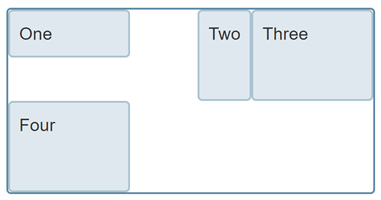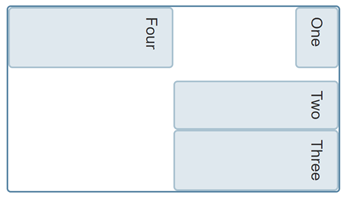Basic concepts of logical properties and values
The CSS logical properties and values module defines flow-relative mappings for many of the physical properties and values in CSS. This article discusses this module, and explains flow relative values and properties.
Why are logical properties useful
CSS 2.1 and earlier had sized things according to the physical dimensions of the screen. Therefore we describe boxes as having a width and height, position items from the top and left, assign borders, margin, and padding to the top, right, bottom, left, etc. The Logical properties and values module defines mappings for these physical properties and values to their logical, or flow relative, counterparts — e.g., start and end as opposed to left and right/top and bottom.
These mappings are very useful for sites that get translated into languages with a different writing mode than the original layout. For example, with a CSS grid layout, if the grid container has a width applied with the align-self and justify-self properties used to align the grid items, as these properties are flow relative, the justify-self: start aligns the item to the start on the inline dimension, and align-self: start does the same on the block dimension.

If the writing mode of this component is changed to vertical-rl using the writing-mode property, the alignment continues to work in the same way. The inline dimension will run vertically and the block dimension horizontally. The grid doesn't look the same, however, as the width assigned to the container is a horizontal measure, a measure tied to the physical and not the logical or flow relative running of the text.

If instead of the width property, the logical property inline-size is used, the component will work the same way no matter which writing mode it is displayed using.

You can try this out in the live example below. Change writing-mode from vertical-rl to horizontal-tb on .grid to see how the different properties change the layout.
<div class="grid">
<div>One</div>
<div>Two</div>
<div>Three</div>
<div>Four</div>
</div>
.grid {
writing-mode: vertical-rl;
inline-size: 400px;
}
When working with a site in a writing mode other than a horizontal, top-to-bottom one, or when using writing modes for creative reasons, being able to relate to the flow of the content makes a lot of sense.
Block and inline dimensions
A key concept of working with flow relative properties and values is the two dimensions of block and inline. CSS layout methods such as flexbox and grid layout use the concepts of block and inline rather than right and left/top and bottom when aligning items.
The inline dimension is the dimension along which a line of text runs in the writing mode in use. Therefore, in an English document with the text running horizontally left-to-right, or an Arabic document with the text running horizontally right-to-left, the inline dimension is horizontal. Switch to a vertical writing mode (e.g., a Japanese document) and the inline dimension is now vertical, as lines in that writing mode run vertically.
The block dimension is the other dimension, and the direction in which blocks — such as paragraphs — display one after the other. In English and Arabic, these run vertically, whereas in any vertical writing mode these run horizontally.
The below diagram shows the inline and block directions in a horizontal writing mode:

This diagram shows block and inline in a vertical writing mode:
